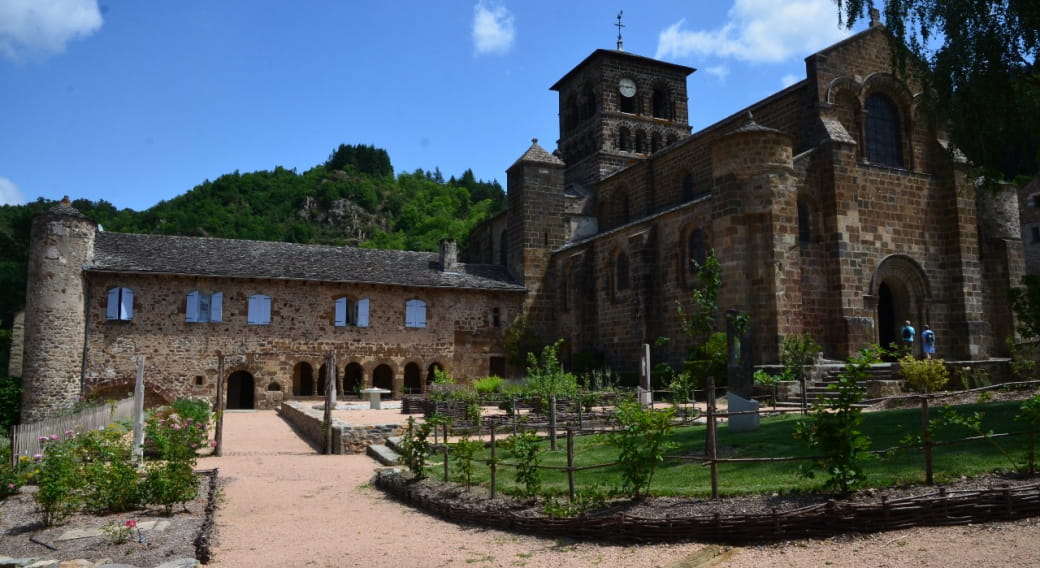A medieval garden and an open-air museum with a chance to explore the plants, materials and history of the Romanesque priory of Chamalières, dating from the 11th and 12th centuries.
The medieval garden of Chamalières-sur-Loire contains some 70 different types of plant (medicinal plants, fruit plants, flowers). It is laid out according to its original 12th century design, the result of an archaeological study undertaken in January and April 2018. The garden features square patches and flowerbeds divided by chestnut wood fencing and containing 28 medicinal plants, along with a grass bench below the courtyard, with typical medieval elements. There are also 18 fruit plants and 25 flowering plants, mainly of kinds that were common in the Middle Ages.
The garden is also an open-air museum. All the plants are identified. Beneath each plant is a stone showing the plant’s common name and Latin name. The Latin names are used all over the world, so can be potentially recognised by overseas visitors.
The garden also recounts the story of the priory in the Middle Ages. Six stone and laminated glass sculptures contain texts to read. The titles are: The development of the priory – The cloister was a garden – Building a priory – Devastating floods – Life of a monk in Chamalières – A place of pilgrimage. An English version is available in the form of a QR code (below the text) to be scanned with a smartphone. Lastly, an information table on the site of the old basin shows a mosaic of the stones used to build the church. It contains an unpolished and polished version of each stone with their names. The table provides a real interaction with the church, with the visitor invited to identify the stones in the mosaic.
From 01/01 to 31/12, daily.









